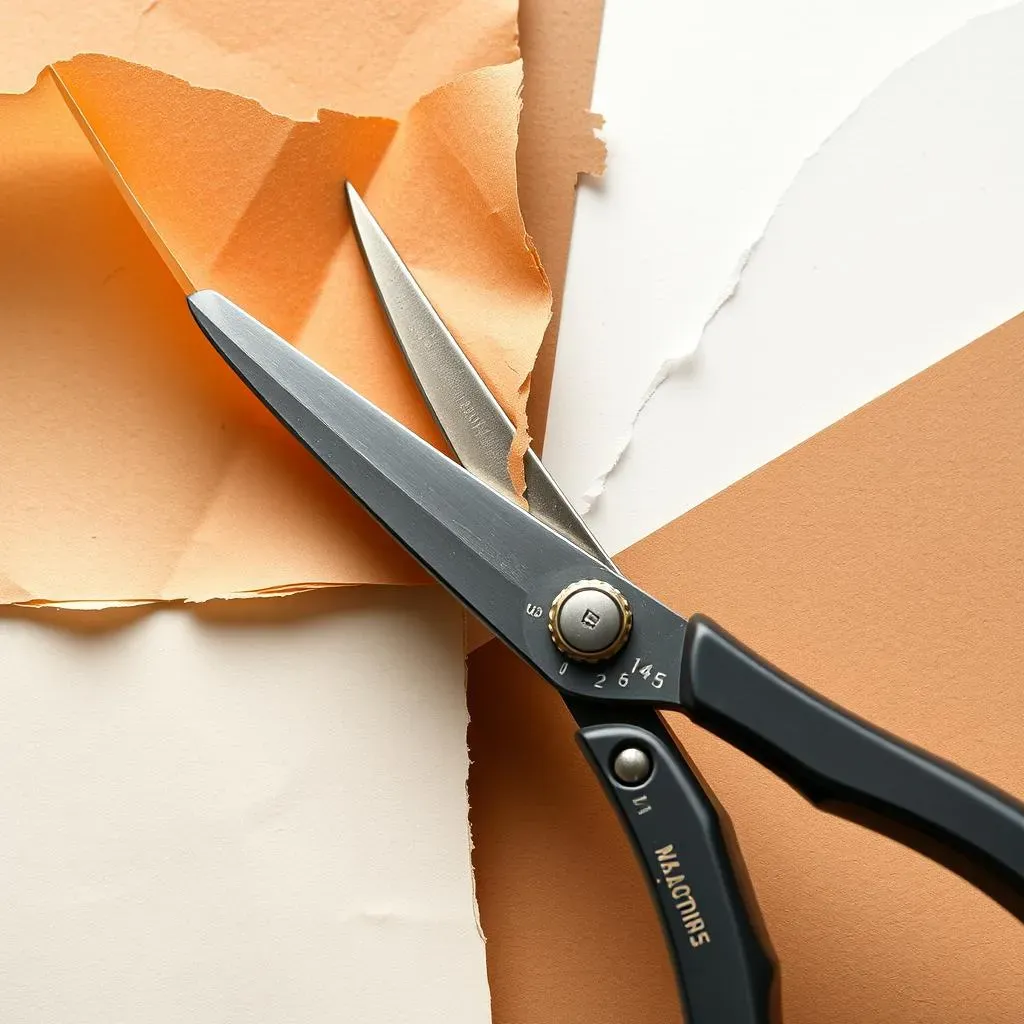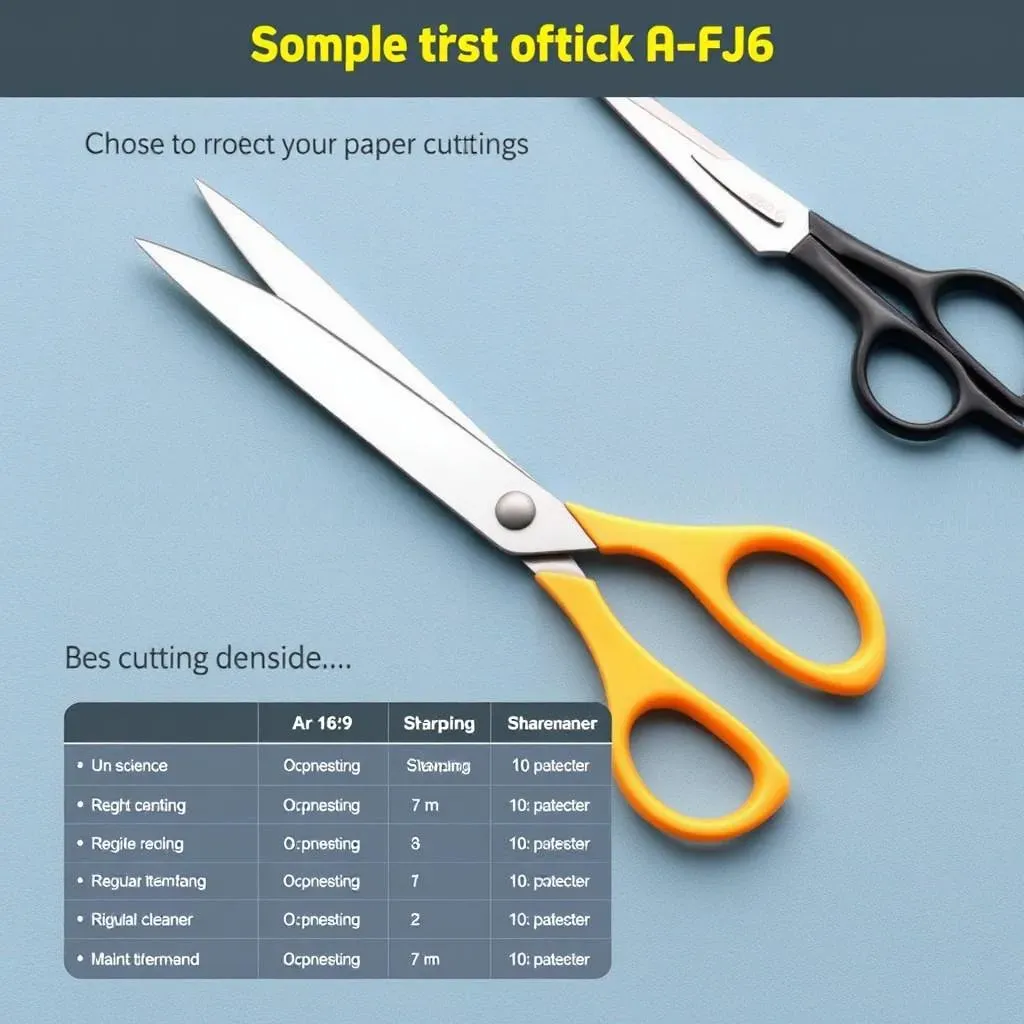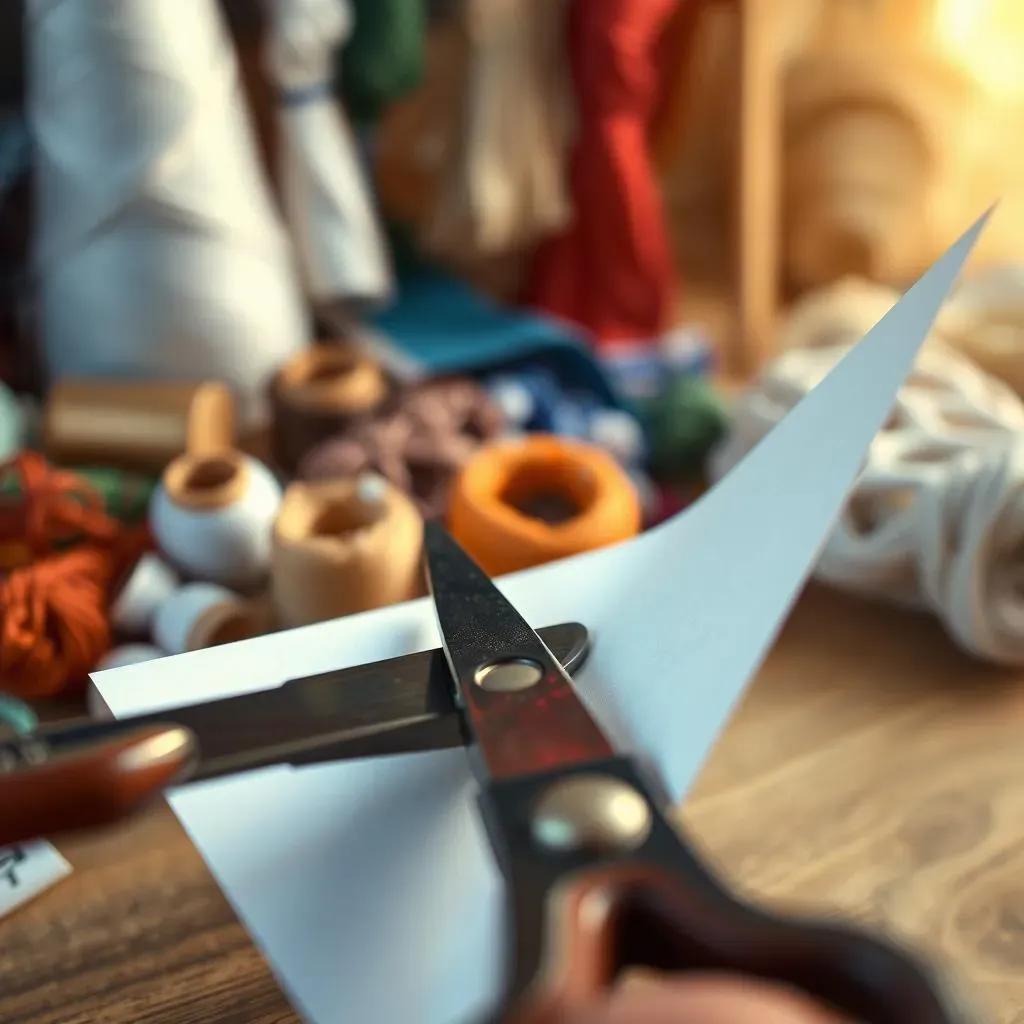Table of Contents
Have you ever wondered, "Does paper cut scissors?" It's a question that sparks debate among crafters, sewers, and anyone who's ever used a pair of scissors. The common belief is a resounding yes, but is that really the whole story? This article dives into the surprising science behind the interaction between paper and scissors. We'll explore the common misconception that paper is inherently damaging to scissors and unpack the actual reasons why your blades might be getting dull. We'll examine the properties of paper that contribute to blade wear and tear, separating fact from fiction. You'll discover it's not just about the act of cutting, but also the composition of the paper itself, and the type of scissors you are using. Finally, we'll equip you with practical tips and tricks to keep your scissors sharp and ready for any project, whether it's delicate fabric or a stack of paper. Get ready to unravel the mystery of "does paper cut scissors" and become a more informed and efficient crafter!
Does Paper Dull Scissors? Debunking the Myth
Does Paper Dull Scissors? Debunking the Myth
The Persistent Paper Myth
Let's tackle the elephant in the room: the widespread belief that cutting paper dulls scissors. It's a myth that's been passed down through generations of crafters, often whispered with a tone of horrified reverence. "Never use your fabric scissors on paper!" they warn. But is this fear entirely justified? The truth, as with many things, is more nuanced. While it's true that *some* types of paper can contribute to blade dullness, it's not the paper itself that's the primary culprit. The real enemy is often the microscopic particles and additives found in many commercially produced papers. Think about it – most paper isn't just pure cellulose fibers. It’s a blend of materials. These added ingredients can be surprisingly abrasive, acting like tiny sandpaper on your precious scissor blades. Choosing the right paper is key to maintaining your tools.
This isn't to say you should carelessly slice through every type of paper with your best shears. However, understanding the *why* behind the warning helps you make informed choices. For example, cutting through thin, high-quality paper, like some types of origami paper, is less likely to cause significant damage than wrestling with thick cardboard or coated paper stock. The key is to be mindful and choose the right tool for the job. And remember, regular cleaning and sharpening are crucial regardless of what you're cutting. A quick wipe down after each use can make a huge difference. Regular sharpening is essential, too. Think of it as a spa day for your scissors!
Paper Type | Abrasiveness | Impact on Scissors |
|---|---|---|
Thin Origami Paper | Low | Minimal dulling |
Thick Cardboard | High | Significant dulling |
Coated Paper Stock | Medium-High | Noticeable dulling |
The Real Culprits: Additives and Minerals
So, if it's not the paper itself, what's the real story? Many papers contain fillers and coatings to enhance properties like smoothness, brightness, and stiffness. These additives, often including minerals like calcium carbonate and clay, are the true culprits. These tiny particles are abrasive, and they can gradually wear down the sharp edges of your scissor blades. It's like constantly rubbing your scissors against very fine sandpaper. The more abrasive the paper, the faster the wear. Think of it like this: Would you use a fine woodworking chisel to chop through a brick wall? Of course not! You'd use the right tool for the job. Similarly, using the right type of scissors for the task at hand can also preserve the quality of your tools. Learn about the best scissors for different types of paper.
Furthermore, the type of scissors matters. Fabric shears, prized for their incredibly sharp blades, are particularly vulnerable to this type of abrasion. Their thin, finely honed edges are designed for smooth, clean cuts through fabric, not the grit of many paper types. This doesn't mean you can't use them on paper *ever*, but it does mean using them carefully and frequently maintaining them. Consider investing in a dedicated pair of paper scissors for heavier-duty cutting tasks. This will keep your high-quality fabric shears sharp and ready for their intended purpose. This is a small investment that can save you a lot of time and frustration in the long run. Besides, who doesn't love having a dedicated tool for every task?
- Calcium Carbonate
- Clay
- Other mineral fillers
The Science Behind Why Paper Cuts Scissors
The Science Behind Why Paper Cuts Scissors
The Science Behind Why Paper Cuts Scissors
So, let's get down to the nitty-gritty. Why *does* paper sometimes seem to dull scissors? It all boils down to a combination of factors: the microscopic structure of paper, the presence of abrasive additives, and the type of scissors being used. Think of a scissor blade as a super-sharp knife edge. When you cut through something, you're not just slicing through material; you're creating friction. This friction, especially when dealing with materials containing hard particles, causes tiny amounts of wear on the blade's edge, gradually dulling it. Paper, unlike fabric, often contains these hard particles. It’s not always obvious, but those fillers and coatings we talked about earlier are a big part of the issue. Precision tools are important.
The hardness of these particles is key. Many paper fillers, like calcium carbonate and clay, have a Mohs hardness scale rating that's higher than the steel used in many scissors. This means these particles are actually *harder* than your scissor blades! When the blades cut through paper, these harder particles create microscopic scratches and abrasions on the blade's edge. This is why using high-quality, sharp scissors designed specifically for paper cutting is so important. They're made to withstand this abrasion better. Using the correct scissors for the job is crucial, otherwise, you may end up damaging your tools. It's a bit like using a butter knife to cut a steak; you'll damage both the knife and frustrate yourself.
- Blade Material Hardness
- Paper Filler Hardness
- Cutting Force and Angle
Furthermore, the way you cut also matters. Aggressive cutting, using excessive force, or cutting at an awkward angle can increase the wear and tear on your scissors. Smooth, controlled cuts are much kinder to your blades. Think of it as a dance; a graceful, precise movement is much more effective and less damaging than a clumsy, forceful one. And remember, cleaning your scissors after each use removes those abrasive particles and helps keep your tools in top shape. A clean tool is a happy tool, and a happy tool makes for happy crafting!
Finally, consider the type of paper. Thinner, less-treated papers are less likely to cause significant dulling than thick cardboard or coated stocks. Just like choosing the right tool for the job, choosing the right paper can make a big difference in preserving your scissors' sharpness. Using thinner, less treated papers will also help to keep your tools in top condition. Investing in high-quality paper is a great way to ensure that your projects look their best, while also protecting your equipment. Learn more about paper types and their impact on your scissors.
Factor | Effect on Blade Dullness |
|---|---|
Abrasive Fillers | Increased dulling |
Cutting Force | Increased dulling |
Cutting Angle | Increased dulling |
Paper Thickness | Increased dulling with thicker paper |
Regular Cleaning | Reduced dulling |
Protecting Your Scissors: Tips and Tricks for Paper Cutting
Protecting Your Scissors: Tips and Tricks for Paper Cutting
Protecting Your Precious Blades
So, you've learned the enemy isn't paper itself, but those sneaky additives. Now, how do we protect our beloved scissors? First, let's talk about choice. Investing in a good pair of paper scissors is a game-changer. These are built to withstand the extra wear and tear. Think of it as having specialized tools for specific tasks – a chef wouldn't use a butter knife to carve a roast, right? Similarly, using the right tool for the job will help to prolong the life of your equipment. Check out our guide to finding the perfect pair for your needs.
Next up: technique. Avoid aggressive cutting. Gentle, controlled snips are far gentler on your blades than forceful hacks. It's all about precision, not brute strength. Think of it like this: would you try to chop down a tree with a tiny pair of embroidery scissors? Of course not! You'd grab a tool fit for the job. Similarly, when cutting paper, choose the right tool for the job to minimize the potential for damage. Mastering paper-cutting techniques will help you avoid damaging your tools.
- Use sharp scissors designed for paper
- Cut gently and precisely
- Clean your scissors after each use
- Sharpen regularly
Regular cleaning is your best friend. After every cutting session, wipe down your blades. A simple cloth will remove those pesky paper particles. This simple step prevents the accumulation of abrasive materials, which can cause premature dulling. Think of it as a quick post-workout stretch for your scissors. It's a small step that makes a big difference in the long run. Regular cleaning will keep your tools in top condition and ready to use whenever you need them.
Finally, don't forget sharpening. Just like any other tool, scissors need regular maintenance to stay sharp. A professional sharpening is ideal, but there are also at-home methods, depending on the type of scissors you have. This helps to restore the blade's edge and maintain its cutting power. Sharpening is an important part of maintaining your scissors, so it is worth the time and effort. A professional sharpening is usually recommended, as it will ensure that your scissors are sharpened correctly and safely. Find out more about sharpening your scissors.
Maintenance Task | Frequency | Benefits |
|---|---|---|
Cleaning | After each use | Removes abrasive particles |
Sharpening | Every few months (or as needed) | Restores blade sharpness |
